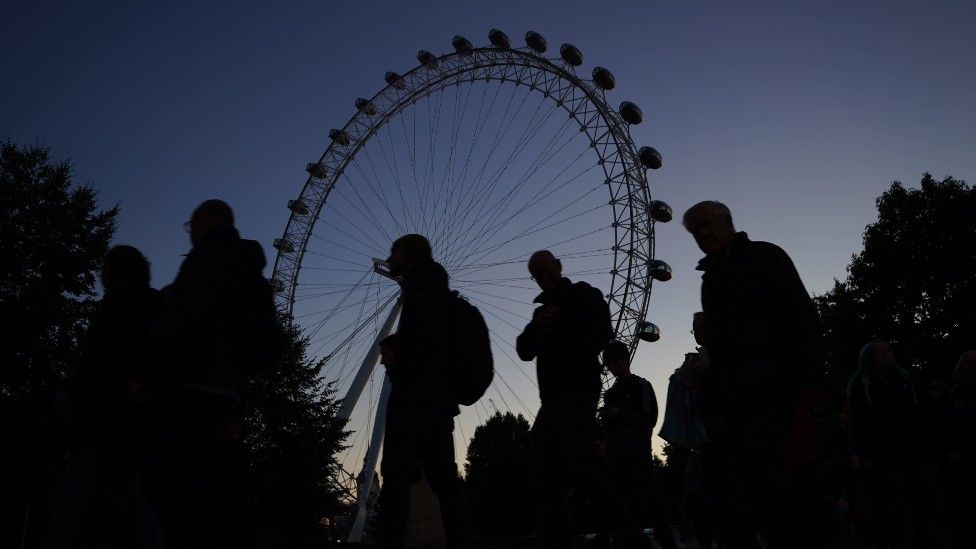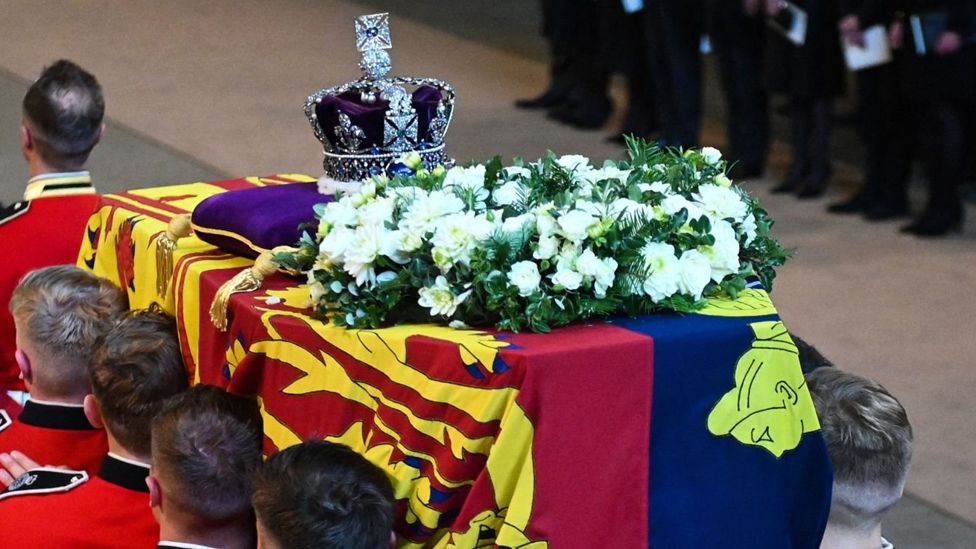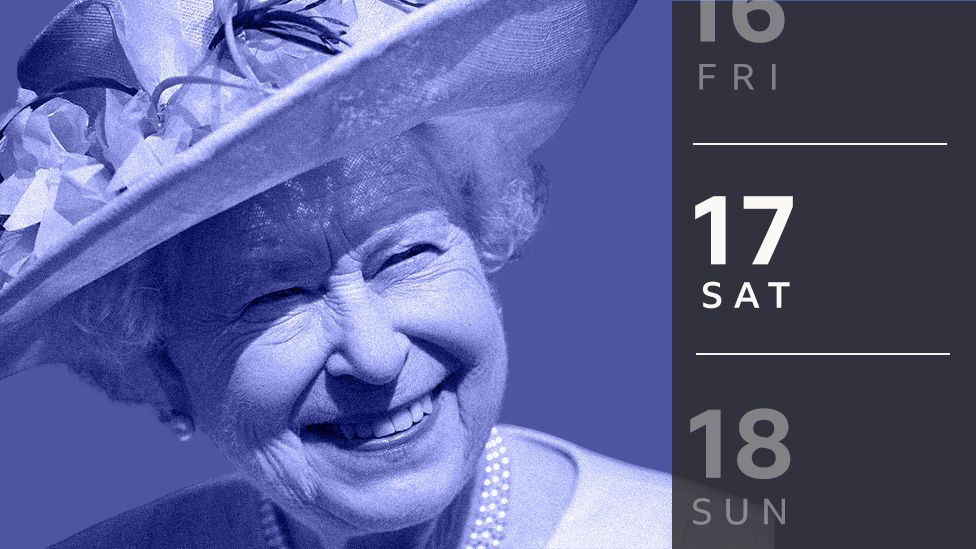Watching the lying-in-state – ‘The queue has a meditative magic of its own’
I never planned to watch a live stream of the Queen lying in state, but sometimes you find yourself at a tipping point.
For me, it was learning that millions of people had already tuned in to the feed from Westminster Hall. Human beings have an insatiable desire to feel like they belong and, last time I checked, I qualify as human.
Intrigued, I loaded the feed on to my iPad as I researched an interview with a US indie band.
Two hours later, I was still watching.
It’s not as if anything startling happened in that time. There was certainly nothing to compare with the royal guard who fainted to the ground early on Thursday morning. But the long and silent queue of people paying their respects has a uniquely meditative magic of its own.
Servicemen with medals from Iraq and Afghanistan salute the Queen. Others cross themselves with a mumbled “thank you”. One woman blew a kiss.
Bored children twist on their parents’ arms and pull itchily at uncomfortable dresses. A baby in a pram clutches a Paddington bear.
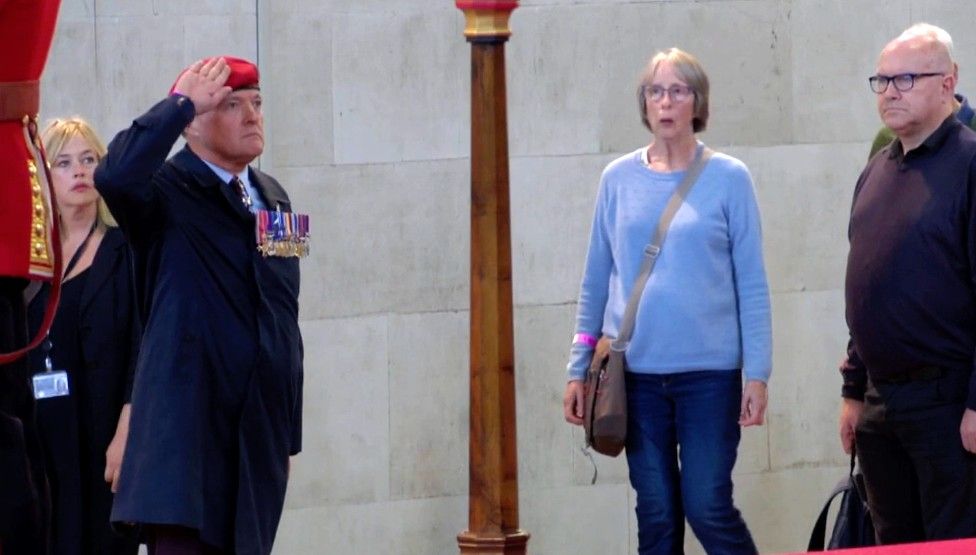
This being Britain, no-one seems entirely sure what to do in the presence of death. Some people curtsey awkwardly, some glance warily at the coffin. At one point, an Asian couple bow thoughtfully and, for the next five minutes, everyone else feels like they have to do it, too.
And the queue shuffles ever forward in quiet contemplation.
More than 750,000 people are expected to have filed through Westminster Hall by Monday. Watching them, even at home, is strangely moving.
“Do you think you’ll go?” asks my mum on the phone from Northern Ireland. “I think if I was in London I would. I was born the year she was made Queen, so it felt like you knew her, even if you didn’t”.
My son, arriving home from school to find me still watching the feed, is less impressed.
“That’s the line-up thing to see the Queen,” he observes. “It’s creepy. Dead body.”
I quickly pause to Google what happened when the Queen’s father, George VI, lay in state 70 years ago; and the similarities are striking.
A Pathé newsreel captures a queue stretching three miles into central London, waiting patiently through the snowy nights of February 1952, with the doors of Westminster Hall only opening in daylight.
“Their night rest they give to the king,” the newsreader intones decoratively. “Keeping vigil that they may make their last salute to a beloved monarch.”
Just like Queen Elizabeth II, the King’s coffin was raised on a catafalque and draped in his royal standard, surrounded by the brass cross of Westminster Abbey and the four candles from the tomb of the Unknown Warrior.
The most noticeable difference? The clothes.
In 1952, everyone wore their Sunday best. Neatly pressed suits, black ties, tasteful hats. On today’s live feed, you could see everything from the red berets of the Royal Military Police to tracksuits and Mountain Warehouse waterproofs. There are women in hijabs and wearing papooses and, memorably, a man dressed as the Tardis.
It’s a sign of how much society changed over the Queen’s reign – the shedding of protocol and deference that has, in some quarters, called the very existence of the monarchy into question.
But it also illustrates the modernisation she ushered in. People like my mum came to think of her as “our Queen”. And that sentiment is evident in the thousands of people who are queuing for up to 30 hours to say goodbye. Mourners dab tears away with crumpled tissues. One woman reads a speech from a notebook. Sadly, the feed doesn’t capture what she’s saying.
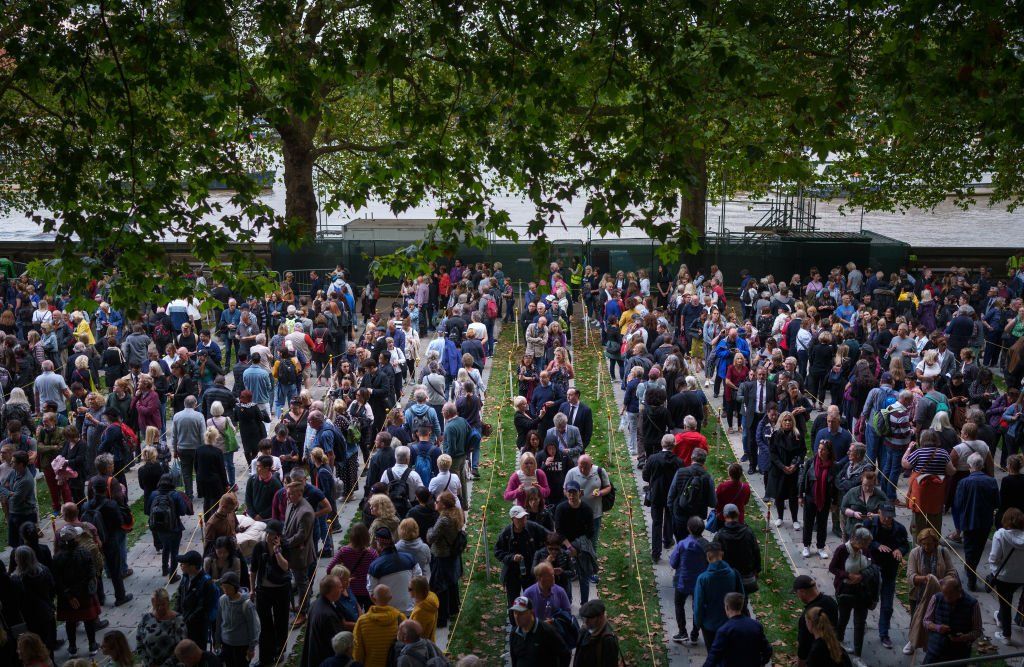
Eventually, as I succumb to work, the feed becomes background noise.
I’m reminded of the Beatles’ Get Back documentary, another fly-on-the-wall film that apparently never ended. After sitting rapt for the first episode, I let the others play out as I got on with my day. It was a nice companion. I’d be making a cup of tea and Ringo Starr would be in the corner, coming up with the chords for Octopus’s Garden.
I think that helps explain the unexpected viewership of the Queen’s lying in state. It fits into a trend for slow television – long, contemplative programmes that evolve glacially over hours and even days. It began in 2009 when the Norwegian Broadcasting Corporation (NRK) televised a seven-hour train journey from Bergen to the capital of Oslo; and came to the UK in 2015, with BBC Four screening footage of the Dawn Chorus and the making of a glass jug.
The broadcast from Westminster Hall affords the same opportunity for thoughtful reflection, whether you’re mourning the Queen or contemplating a loss of your own.
It’s not lost on me that this sort of public gathering wasn’t possible for Prince Philip’s memorial last year. Many of the mourners are still wearing face masks, and will have passed the National Covid Memorial Wall as they arrive in Westminster. The Samaritans are on hand to help those who are overcome.
And suddenly I’m remembering my own grandmother’s funeral, during the lockdown back in Northern Ireland.
Only 15 people were permitted to attend but, as the hearse set off for the cemetery, dozens of relatives, friends and acquaintances gathered on the rain-soaked street where my parents live, to send her off.
That simple gesture was one of the most moving moments of my life. And while the royals are used to crowds greeting their every move, I suspect they will be similarly overwhelmed by this week’s display of affection.
Follow us on Facebook, or on Twitter @BBCNewsEnts. If you have a story suggestion email entertainment.news@bbc.co.uk.


- 4 hours ago
